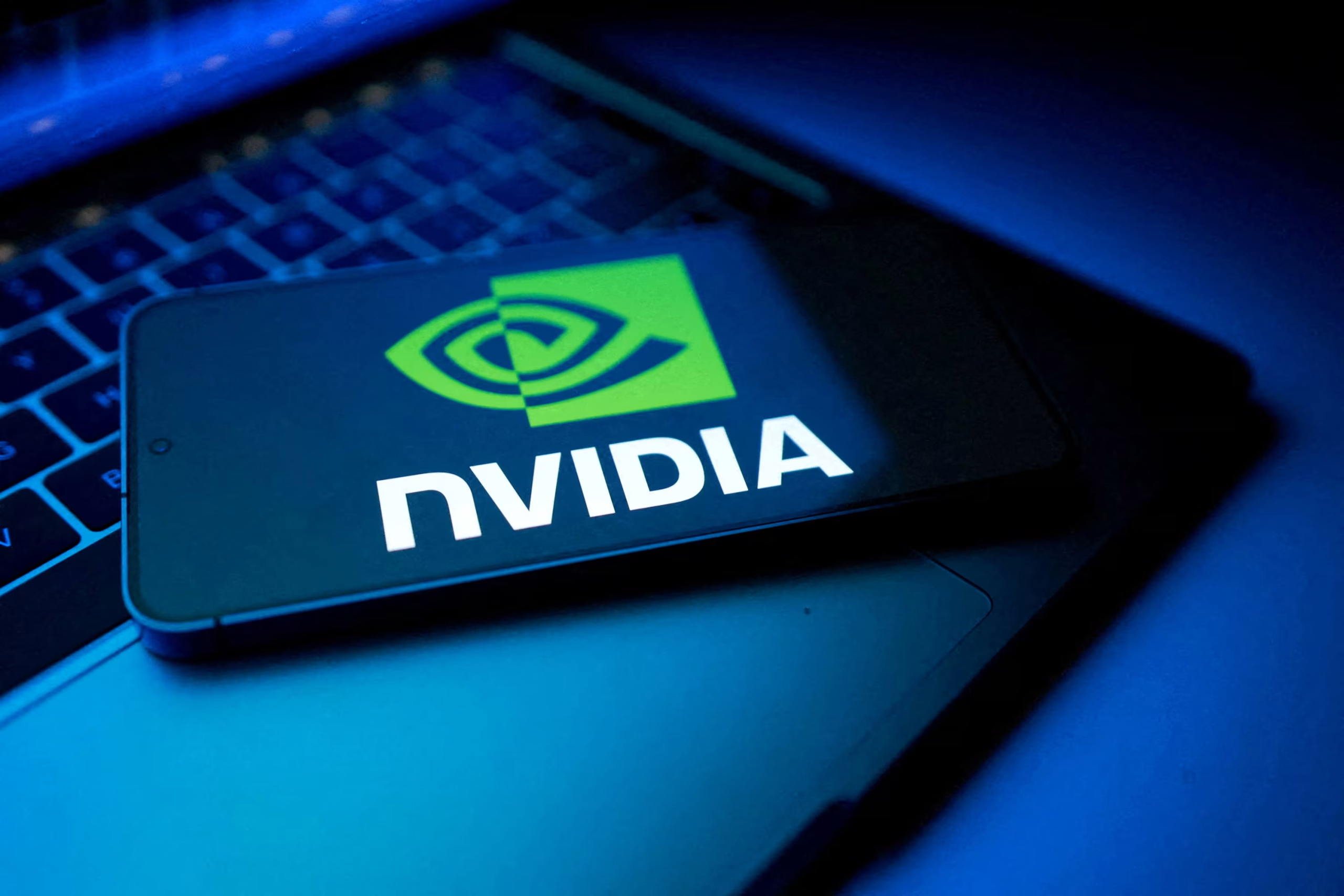Nvidia shares rocketed higher in after-hours trading following a stunning earnings report that crushed Wall Street's already lofty expectations. The chip giant delivered revenue of $57 billion for the quarter ending October, marking a blistering 62% jump from the year before.
This surge came on the back of insatiable demand for its AI accelerators, the specialized hardware powering everything from chatbots to complex simulations in data centers worldwide. Investors breathed a collective sigh of relief as the numbers painted a vivid picture of AI's staying power, far beyond the frothy speculation that's dominated headlines lately.
The market's reaction was swift and electric. Shares climbed about 4% in extended trading, adding billions to Nvidia's market cap overnight. For everyday investors watching from the sidelines, this isn't just another tech win, it's a beacon signaling that the AI gold rush has legs. According to analysis reviewed by Finance Monthly, the results underscore how Nvidia has transformed from a graphics card maker into the indispensable backbone of the digital age.

Jensen Huang addresses investors and tech enthusiasts, highlighting Nvidia’s record AI chip sales and $57 billion quarterly revenue, underscoring the company’s role as a financial powerhouse in the AI market.
The Earnings That Crushed Doubts and Sparked Jubilation
Wall Street had braced for solid numbers, but Nvidia delivered a thunderbolt. The data center segment, the heart of its AI empire, exploded to $51 billion in revenue, up 66% year over year. That's not incremental growth, it's a tidal wave reshaping the tech landscape. Chief Executive Jensen Huang captured the moment's intensity during the earnings call, his voice steady yet charged with conviction. He dismissed bubble talk outright, declaring that from Nvidia's front lines, the view looks like relentless, world-altering demand, not fleeting mania.
This emotional pivot from fear to fervor hit investors hard. Months of hand-wringing over whether AI was the next dot-com disaster evaporated in an instant. Huang's words landed like a rallying cry, reminding everyone that behind the buzz, real machines are humming in server farms, crunching data at scales once thought impossible. The fourth-quarter outlook only fanned the flames, with guidance pointing to $65 billion in revenue, well above analyst whispers. It's the kind of beat that doesn't just move the stock, it redefines expectations for the entire sector.
AI Hype Meets Hard Cash: Nvidia's Unshakable Foundation
Skeptics have long whispered about an AI bubble, conjuring images of overinflated dreams crashing down like the internet bust of 2000. Yet Nvidia's ledger tells a different, more grounded story. Profit margins remain robust, cash flows like a river in flood season, and orders for its latest Blackwell AI systems are vanishing faster than tickets to a sold-out concert. Cloud providers can't get enough of these GPUs, with backlogs stretching into the horizon.
Matt Britzman, a senior equity analyst at Hargreaves Lansdown, cut through the noise with a comment that resonated deeply. He called it operational excellence at its finest, a rare blend of innovation and execution that feels almost poetic in a market starved for authenticity. There's an undercurrent of raw emotion here, the thrill of watching a company not just survive the hype but thrive on it, turning abstract algorithms into billions in black ink. For consumers dipping toes into stocks, this is the reassurance that not every shiny tech promise ends in heartbreak.

The OpenAI and Nvidia logos side by side, marking their $100 billion alliance to build next-generation AI infrastructure.
Nvidia at the Helm of the AI Armada
Picture the sprawling web of AI titans, from OpenAI's witty ChatGPT to Elon Musk's ambitious xAI, all leaning on Nvidia's silicon wizardry to bring their visions to life. The company's fingerprints are everywhere, and recent moves amplify that grip. Just weeks ago, Nvidia unveiled plans for a colossal data center in Saudi Arabia, with xAI as its anchor tenant, loaded with hundreds of thousands of GPUs ready to tackle frontier AI challenges.
Colette Kress, Nvidia's chief financial officer, highlighted the sheer financial gravity of these ties during the call. She revealed expectations for orders piling up beyond the already staggering $500 billion in AI chip commitments, a pipeline that promises revenue gushers for years. Even headwinds like U.S. export curbs to China barely dent the momentum. Huang and Kress spoke with quiet determination about navigating those waters, their tone laced with optimism that unlocked markets could pour in billions more. It's a narrative of global conquest, one server at a time, that keeps retail investors glued to their screens.
Why This Moment Feels Like a Turning Point for Your Portfolio
Nvidia isn't operating in a vacuum, its pulse quickens the entire market's heartbeat. When it soars, ripples spread to suppliers, partners, and even rival chipmakers scrambling to catch up. Earlier this year, AI fervor lifted tech indexes to dizzying heights, only to stir echoes of past busts that left fortunes in ruins. Now, with Nvidia's proof of profitable scale, the script flips. Adam Turnquist, chief technical strategist at LPL Financial, nailed the investor psyche perfectly. He noted that the real intrigue lies not in whether Nvidia clears the bar, but in the margin of victory, a sentiment that stirs a mix of awe and urgency.
This bellwether role adds layers of drama, turning quarterly reports into high-stakes theater. For the average person building a nest egg, it's a cue to reassess, to see AI not as gamble but as engine. The company's moat, built on proprietary tech and ironclad contracts, shields it from the storms battering flashier AI upstarts. In a world of fleeting trends, Nvidia's consistency feels like a warm hand on the shoulder, guiding through uncertainty.
Decoding Nvidia's Profit Engine: The High-Margin Magic Powering AI's Future
At the core of Nvidia's dominance lies a financial secret weapon that turns chip sales into a treasure trove: sky-high gross margins. In simple terms, gross margin measures how much money a company keeps from each dollar of revenue after covering the direct costs of making its products, like raw materials and assembly. For Nvidia, this figure hovers around an enviable 76%, meaning for every $100 in sales, about $76 flows straight to funding innovation, paying employees, or padding profits. That's leagues above the 40-50% typical in hardware, where razor-thin edges often lead to feast-or-famine cycles.
This isn't luck, it's masterful design. Nvidia's chips pack dense computing power into compact forms, slashing production costs while commanding premium prices from desperate buyers. Consider a real-world parallel: it's akin to a luxury watchmaker who sources gold efficiently yet sells at a markup that funds exquisite craftsmanship year after year. According to recent filings, these margins helped generate over $20 billion in free cash flow last quarter alone, a war chest letting Nvidia pour billions into next-gen R&D without skimping elsewhere.
The insight here cuts deeper for everyday investors. High margins create a virtuous loop, where profits fuel faster product cycles, drawing in more giants like Meta or Google for exclusive deals. In an AI world projected to hit $1 trillion in spending by 2030, Nvidia's edge means sustained growth that could weather economic squalls others can't. It's not just numbers on a balance sheet, it's the quiet force making AI accessible and explosive, offering a blueprint for spotting winners in your own investments. This financial muscle adds emotional weight too, a sense of security amid the chaos, knowing one company's smarts could safeguard your financial dreams.

Jensen Huang transformed a diner-born idea into a $2 trillion AI empire.
What Investors Are Buzzing About Right Now
What Sparked Nvidia's Explosive Revenue Jump This Quarter?
Nvidia's latest quarter shattered records thanks to a perfect storm of AI hunger from cloud behemoths and enterprises upgrading their infrastructure. Demand for Hopper and Blackwell GPUs outstripped supply, with data center sales alone hitting $51 billion, up 66% from last year. CEO Jensen Huang pointed to sold-out inventories as proof of a multi-year buildout cycle. For consumers, this signals AI tools like advanced image generators becoming everyday realities, driven by hardware that's both powerful and scalable. The ripple? Broader tech adoption that could boost jobs in creative fields while pressuring smaller players to innovate or fade.
Is the AI Bubble About to Burst, or Will It Keep Inflating?
Bubble fears linger, fueled by lofty valuations across AI stocks, but Nvidia's results tilt the scales toward endurance. Unlike dot-com era flops with zero revenue, Nvidia boasts $57 billion in quarterly sales backed by $500 billion in orders, per its disclosures. Analysts like those at Hargreaves Lansdown see operational strength trumping speculation. Emotionally, it's a rollercoaster relief for investors who've ridden the highs and lows. The real test? Sustained enterprise spending amid economic shifts. If history holds, selective survivors like Nvidia will emerge stronger, rewarding patient holders with compounded gains over the decade.
How Can Everyday Investors Ride Nvidia's Wave Without Getting Soaked?
Jumping into Nvidia stock demands caution, but strategies abound for the risk-averse. Start with dollar-cost averaging, buying fixed amounts monthly to smooth volatility, especially post-earnings dips. Diversify via ETFs like the Invesco QQQ that hold Nvidia alongside peers, spreading exposure. Experts at LPL Financial advise focusing on long-term themes, like AI's role in healthcare diagnostics, which could add 20% annual returns based on sector projections. The human side? It empowers you to own a slice of tomorrow's breakthroughs, turning abstract tech news into tangible portfolio growth that feels empowering and exciting.














